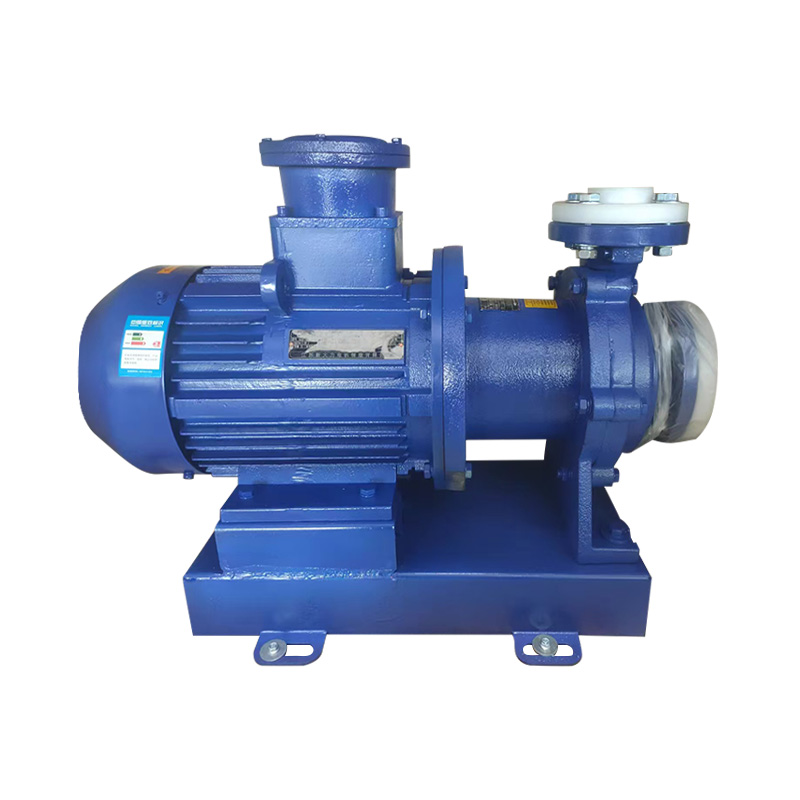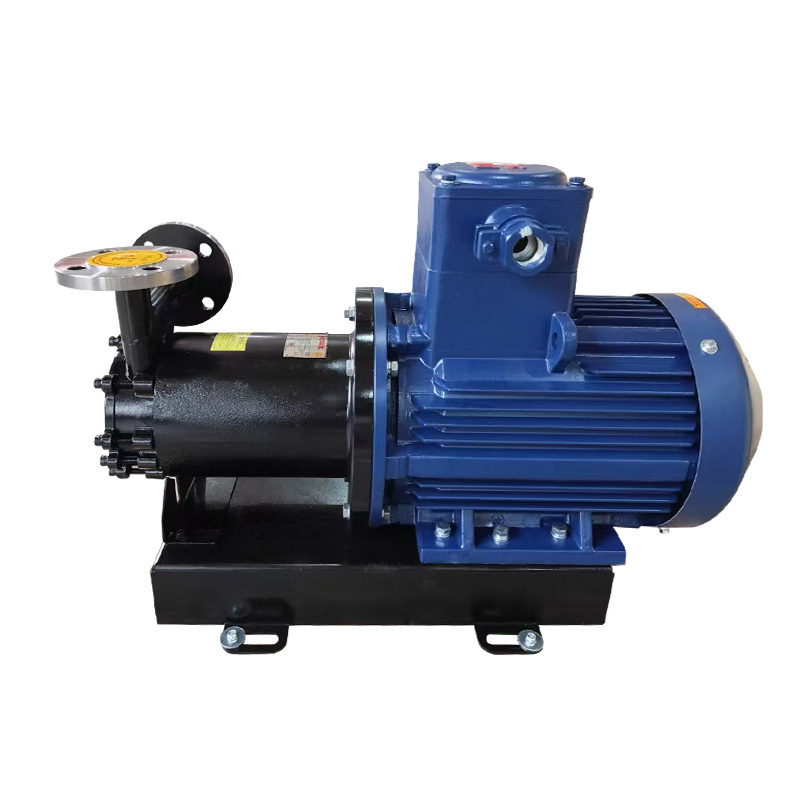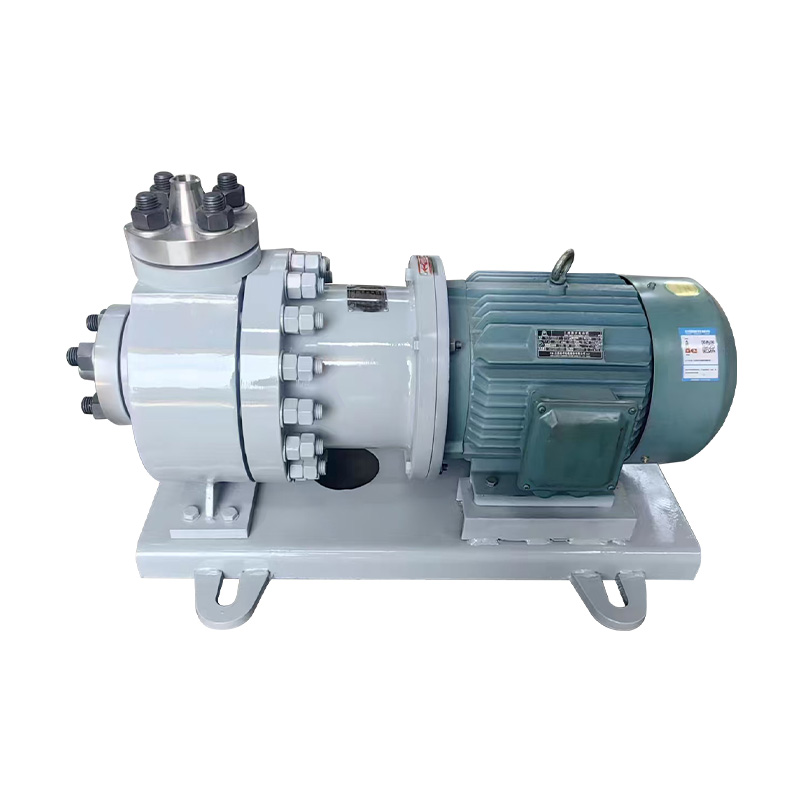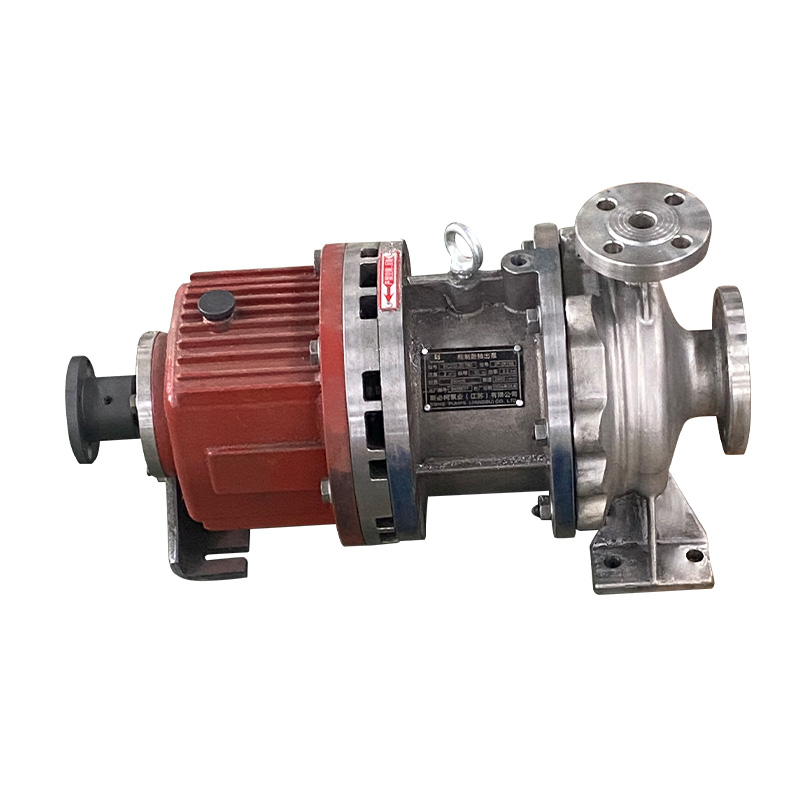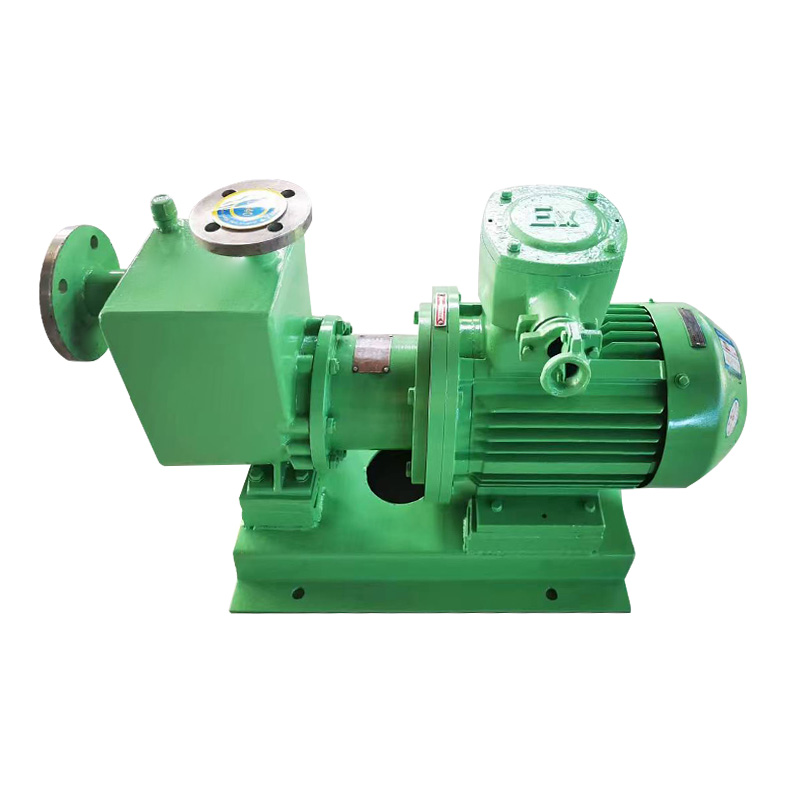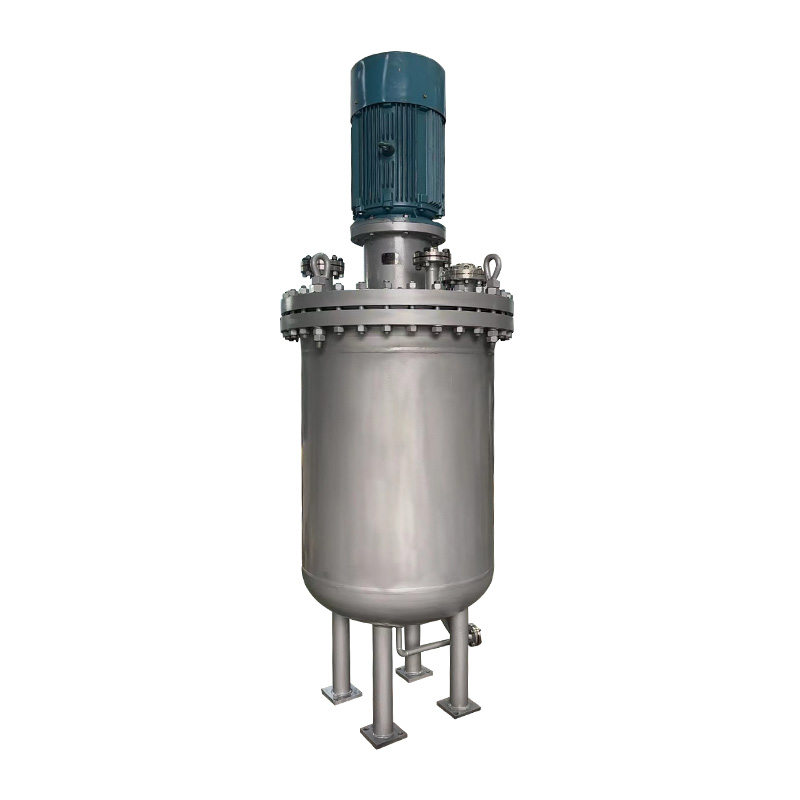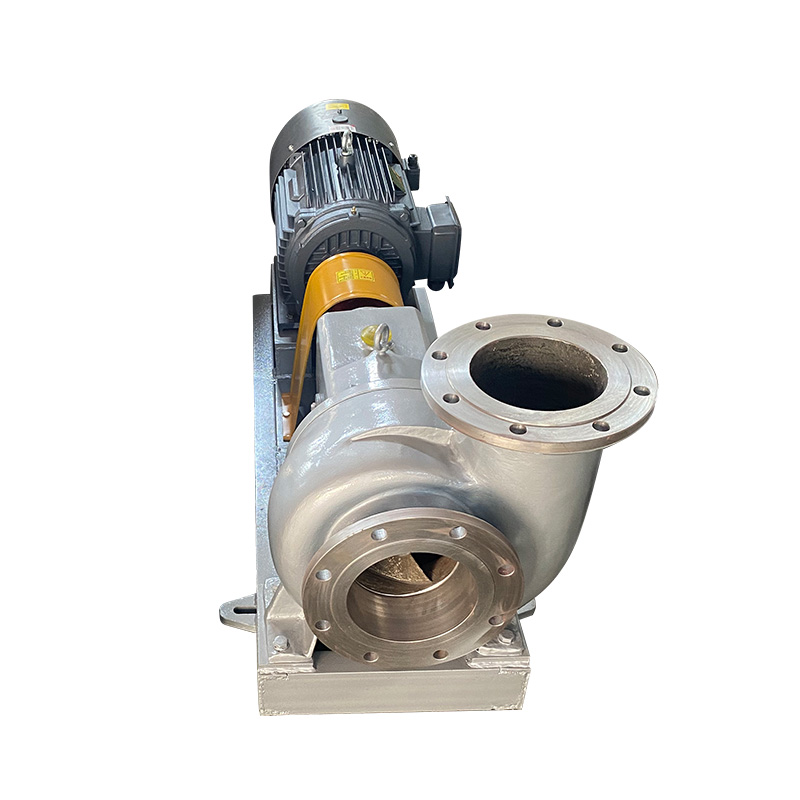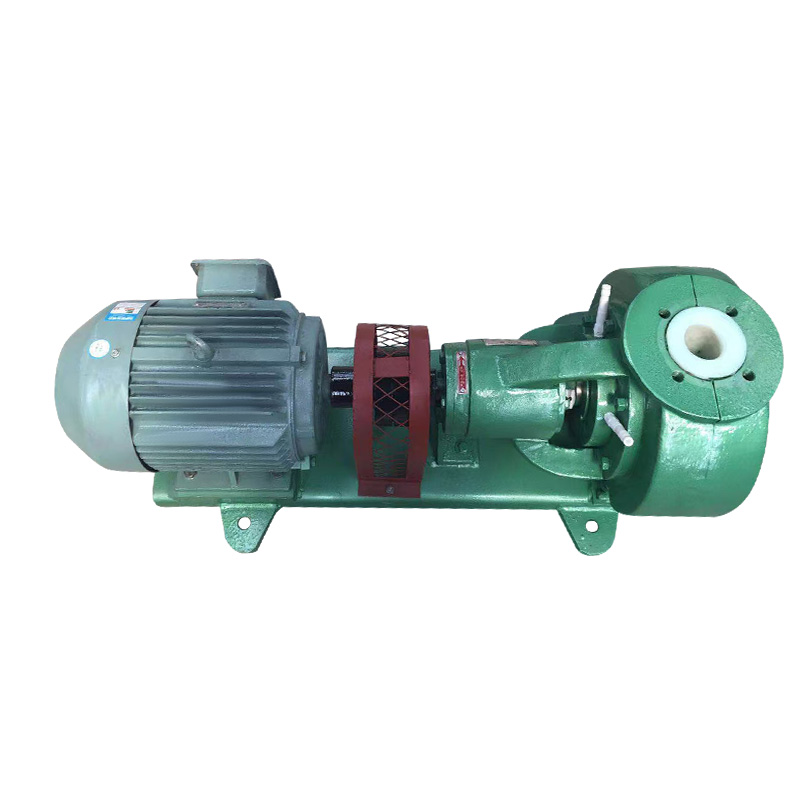Introduction: What Is a Fluorine Plastic Pump?
A Fluorine Plastic Pump is a corrosion-resistant chemical pump designed to handle highly aggressive and reactive fluids. The main feature that distinguishes it from conventional metal pumps lies in its construction materials — the internal components are made of fluorine-based plastics such as PTFE (polytetrafluoroethylene) or FEP (fluorinated ethylene propylene). These materials provide excellent resistance to acids, alkalis, oxidants, and organic solvents.
In industrial environments where liquids are extremely corrosive or where metal parts would rapidly deteriorate, the Fluorine Plastic Pump ensures both safety and durability. It is often used in chemical processing, environmental engineering, pharmaceuticals, and other industries that demand reliable fluid transfer under harsh conditions.
Unlike ordinary pumps, this type of pump combines mechanical strength with chemical stability, allowing it to operate efficiently even at elevated temperatures or in continuous service. Its structure minimizes the risk of leakage and contamination, making it suitable for transporting high-purity or hazardous fluids.
In short, a Fluorine Plastic Pump is not only a piece of equipment but a critical solution for industries seeking long-term performance and safety when dealing with corrosive or toxic liquids.
Key Features of Fluorine Plastic Pumps
1. Excellent Corrosion Resistance
The most significant advantage of a Fluorine Plastic Pump lies in its corrosion resistance. The pump’s internal parts, such as the impeller, volute, and sealing components, are made from high-grade fluoroplastics like PTFE (Polytetrafluoroethylene), FEP (Fluorinated Ethylene Propylene), or PVDF (Polyvinylidene Fluoride). These materials form an inert barrier between the pumped liquid and the structural components of the pump, preventing chemical attack and extending equipment life dramatically.
2. Wide Temperature and Pressure Range
A properly designed Fluorine Plastic Pump can operate safely within a broad temperature range, typically from -20°C to 120°C, and in some specialized models up to 150°C.
| Parameter | Fluorine Plastic Pump | Conventional Metal Pump |
|---|---|---|
| Corrosion Resistance | Excellent (Resistant to acids, alkalis, solvents) | Moderate to Poor (depends on alloy type) |
| Operating Temperature | -20°C to 150°C (depending on plastic grade) | -40°C to 250°C (limited by corrosion resistance) |
| Chemical Compatibility | Broad (more than 95% of industrial chemicals) | Limited (requires specific metal selection) |
| Maintenance Frequency | Low | Medium to High |
| Average Service Life | 5–10 years (with proper maintenance) | 2–4 years (in corrosive environments) |
3. Magnetic Drive and Leak-Free Operation
Many modern Fluorine Plastic Pumps adopt a magnetic drive structure, eliminating traditional mechanical seals that are prone to wear and leakage. This design allows complete isolation between the motor and the pumped liquid, which is crucial when handling hazardous or toxic chemicals.
4. Lightweight and Energy-Efficient Design
Compared with heavy metallic pumps, a Fluorine Plastic Pump is significantly lighter, simplifying installation and reducing mechanical vibration. The internal fluid channels are designed to minimize hydraulic losses, improving overall efficiency and reducing operating costs.
5. Long-Term Reliability and Easy Maintenance
The internal surfaces of fluorine plastic components are smooth and non-adhesive, meaning scaling, sedimentation, and crystallization are minimized. Additionally, because fluorine plastics are self-lubricating, they reduce frictional wear and extend bearing life.
Types and Structures: How Many Kinds of Fluorine Plastic Pumps Are There?
1. Lined Chemical Pump (衬氟化工泵)
- Structure: Metallic frame + fluoroplastic lining
- Application: Acidic wastewater, oxidizing agents, and alkali solutions
- Advantages: Strong mechanical stability, cost-effective
- Limitations: Heavier; lining may degrade if exposed to thermal shock
2. Fluorine Plastic Magnetic Drive Pump (氟塑料磁力驱动泵)
- Structure: Outer drive magnet + inner driven magnet + sealed fluoroplastic casing
- Application: Toxic, flammable, or volatile chemical liquids
- Advantages: Absolutely leak-free, safe for hazardous media
- Limitations: Limited flow rate for high-viscosity fluids
3. Fluorine Plastic Centrifugal Pump
- Structure: Simple design with direct coupling to the motor
- Application: Acidic or alkaline solutions, neutral solvents
- Advantages: Easy to install, low cost
- Limitations: Requires priming, potential seal wear
4. Fluorine Plastic Self-Priming Pump
- Structure: Built-in air–liquid separation chamber
- Application: Below-grade tank or process pit fluids
- Advantages: Quick startup, stable suction
- Limitations: Slightly lower efficiency
5. Vertical Fluorine Plastic Pump
- Structure: Vertical shaft + immersion design
- Application: Chemical plating, waste treatment
- Advantages: Compact, minimal leakage
- Limitations: Requires precise alignment
| Pump Type | Corrosion Resistance | Leak Prevention | Pressure Capacity | Ease of Maintenance | Typical Applications |
|---|---|---|---|---|---|
| Lined Chemical Pump | Excellent | Good | High | Moderate | Acidic wastewater, oxidants |
| Magnetic Drive Pump | Excellent | Excellent | Medium | Easy | Hazardous or volatile liquids |
| Centrifugal Pump | Very Good | Good | Medium | Easy | General chemical transfer |
| Self-Priming Pump | Very Good | Good | Medium | Easy | Below-tank transfer |
| Vertical Pump | Excellent | Excellent | High | Moderate | Tank circulation, acid storage |
How to Choose the Right Fluorine Plastic Pump?
1. Identify the Nature of the Medium
- Strong acids: PTFE or FEP construction.
- Strong alkalis: PVDF or PFA materials.
- Organic solvents: Use fluoroplastics to resist swelling.
- High-purity chemicals: Magnetic drive pumps preferred.
2. Consider Operating Conditions
- Temperature range: -20°C to 150°C depending on grade.
- High-temp fluids: Lined or vertical pump.
- Low-pressure transfer: Magnetic drive pump.
3. Evaluate Installation Environment
- Horizontal centrifugal: general-purpose.
- Vertical: tank or pit use.
- Self-priming: below-tank installations.
| Application Scenario | Fluid Type | Temperature Range (°C) | Recommended Pump Type | Material Suggestion | Key Advantages |
|---|---|---|---|---|---|
| Acidic chemical transfer | HCl, H2SO4 | 0–100 | Lined Chemical Pump | PTFE / FEP | Strong corrosion resistance |
| Alkaline wastewater | NaOH, ammonia | 0–80 | Centrifugal Pump | PVDF | Stable and easy maintenance |
| Toxic or volatile liquids | HF, benzene | -10–100 | Magnetic Drive Pump | PTFE / PFA | Leak-free |
| High-temperature process | Oxidizing acids | 80–150 | Vertical Pump | FEP / PVDF | Durable under heat |
Applications: Where Are Fluorine Plastic Pumps Used?
1. Chemical Processing Industry
- Typical fluids: Hydrochloric acid, sulfuric acid
- Pumps: Lined Chemical Pump / Magnetic Drive Pump
- Benefits: High corrosion resistance, leak prevention
2. Environmental Protection and Waste Treatment
- Fluids: Waste acid, electroplating wastewater
- Pumps: Self-Priming Pump / Centrifugal Pump
- Benefits: Handles solids, stable operation
3. Pharmaceutical and Biochemical Industries
- Pumps: Magnetic Drive Pump
- Benefits: Leak-free, contamination-free
4. Semiconductor and Electronics Manufacturing
- Fluids: HF, HCl, H2SO4
- Pumps: Magnetic Drive / Vertical Pump
- Benefits: Cleanroom compatible
5. Metallurgy and Surface Treatment
- Pumps: Vertical Fluorine Plastic Pump
- Benefits: Withstands high temperature acids
| Industry | Common Fluids | Temperature Range (°C) | Recommended Pump Type | Key Performance Benefit |
|---|---|---|---|---|
| Chemical Processing | Acids, alkalis | 0–150 | Lined Chemical / Magnetic Drive | Corrosion-proof |
| Environmental Protection | Waste acid | 0–80 | Self-Priming / Centrifugal | Handles solids |
| Pharmaceutical | Reagents | 10–90 | Magnetic Drive | High purity |
| Semiconductor | Etchants | 20–120 | Magnetic Drive / Vertical | Cleanroom compatible |
Maintenance and Performance Optimization
1. Routine Maintenance Schedule
| Maintenance Task | Recommended Frequency | Purpose / Notes |
|---|---|---|
| Check casing | Weekly | Detect early corrosion |
| Inspect impeller | Monthly | Remove scaling |
| Verify motor alignment | Monthly | Prevent stress |
5. Common Faults and Troubleshooting Guide
| Problem | Possible Cause | Solution |
|---|---|---|
| Low flow | Clogged impeller | Clean impeller |
| Vibration | Misalignment | Realign motor |
Conclusion: Why Fluorine Plastic Pumps Are the Future of Corrosion-Resistant Solutions
As industries evolve toward higher efficiency, safety, and sustainability, the Fluorine Plastic Pump has become more than a specialized tool—it represents the future of chemical fluid handling technology.
Combining superior chemical resistance, leak-free design, and long-term stability, the Fluorine Plastic Pump delivers performance that metallic pumps cannot match.
1. The Core Value
The success of the Fluorine Plastic Pump lies in its material innovation using PTFE, FEP, and PVDF.
2. Industrial Trends and Innovation
- Environmental protection – zero-emission systems.
- Smart monitoring – IoT-based predictive maintenance.
- Energy efficiency – lightweight composites.
3. Economic and Safety Advantages
Fluorine Plastic Pumps reduce costs and risks, providing long service life and minimizing leaks.
4. The Future Outlook
The Fluorine Plastic Pump will continue to evolve with new materials, digital diagnostics, and intelligent design.
5. Final Summary
In summary, the Fluorine Plastic Pump represents material innovation, engineering reliability, and environmental responsibility. It will remain a future-ready solution for corrosion-resistant pumping systems.
Frequently Asked Questions (FAQ)
1. What makes a Fluorine Plastic Pump different from a conventional metal pump?
A Fluorine Plastic Pump differs by using fluoropolymers like PTFE, FEP, and PVDF, offering exceptional chemical resistance and leak-free operation.
2. How do I choose the right type of Fluorine Plastic Pump for my application?
Choose based on fluid type, temperature, and system layout—use Magnetic Drive for toxic fluids, Lined for strong acids, and Vertical for tank setups.
3. What are the best practices to maintain a Fluorine Plastic Pump?
- Inspect seals and bearings regularly.
- Avoid dry running.
- Keep within rated temperature.
- Clean with neutral solutions.
Properly maintained, a Fluorine Plastic Pump can last 5–10 years or more.
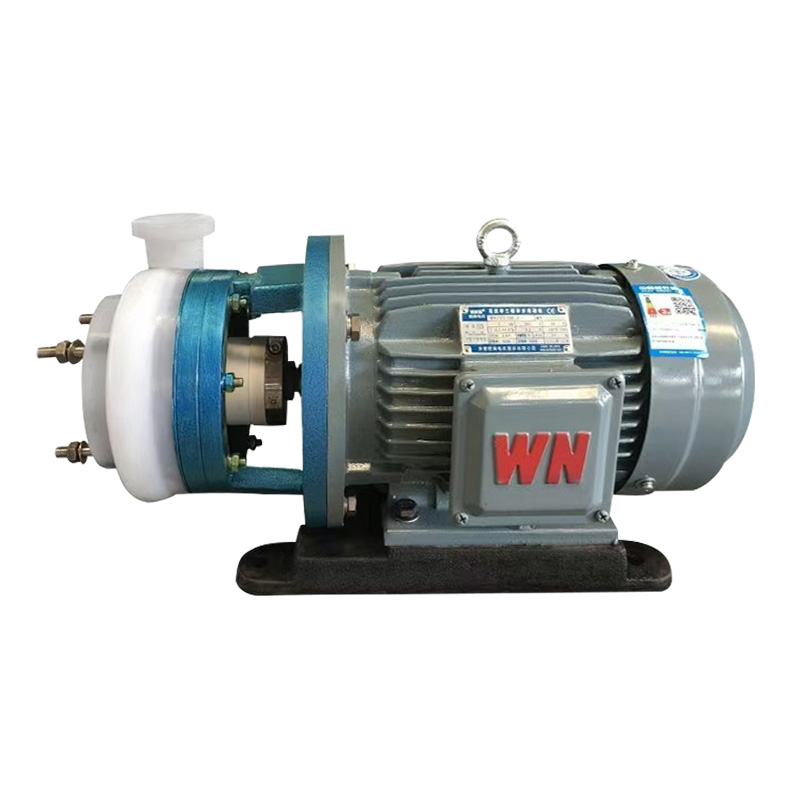



 English
English русский
русский Español
Español